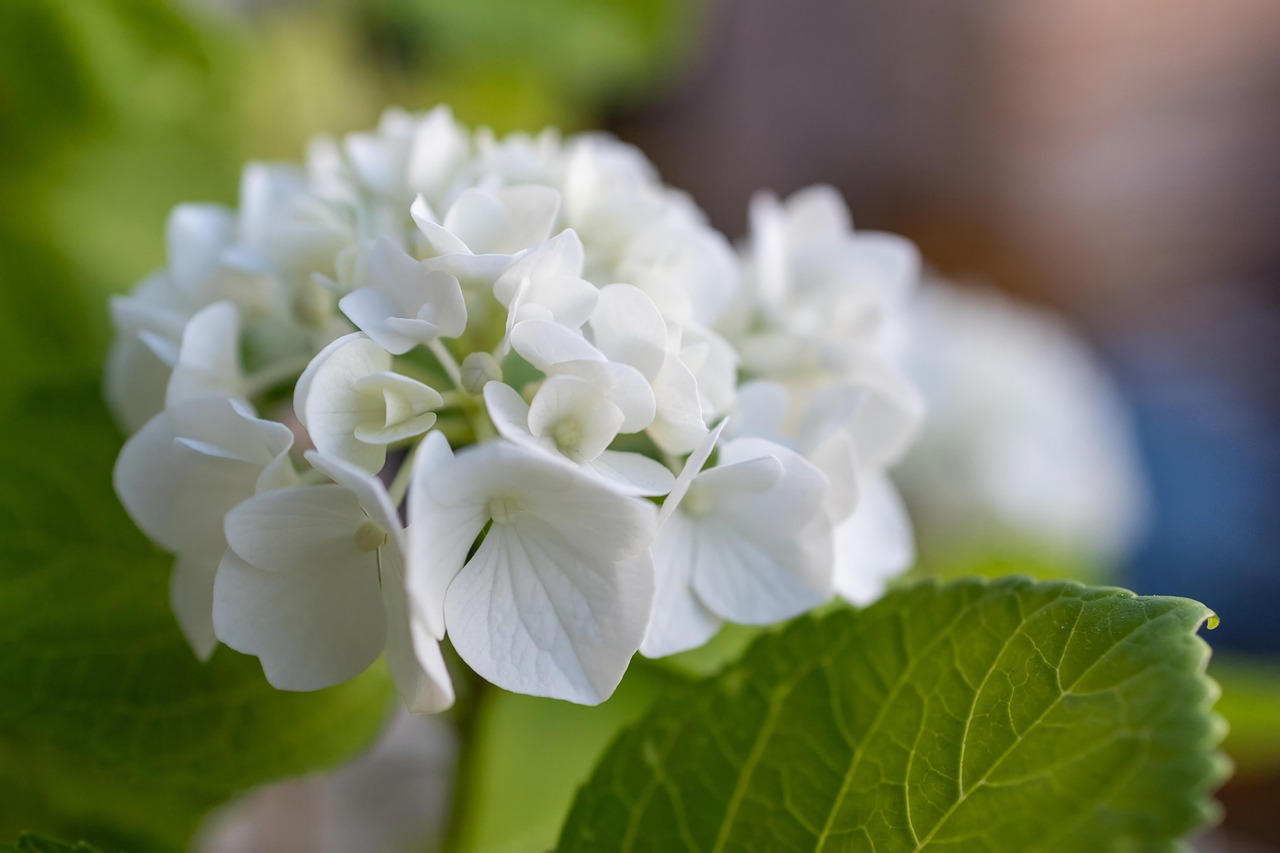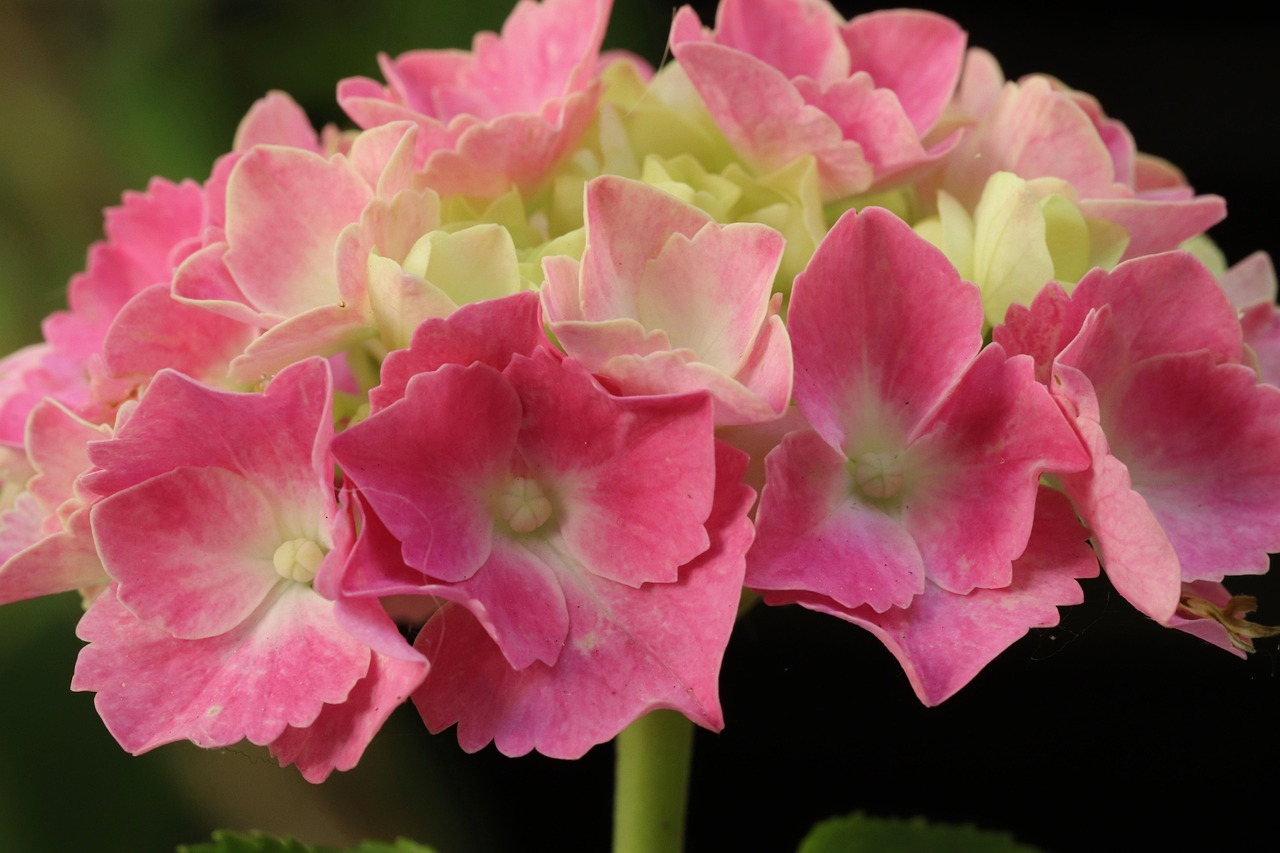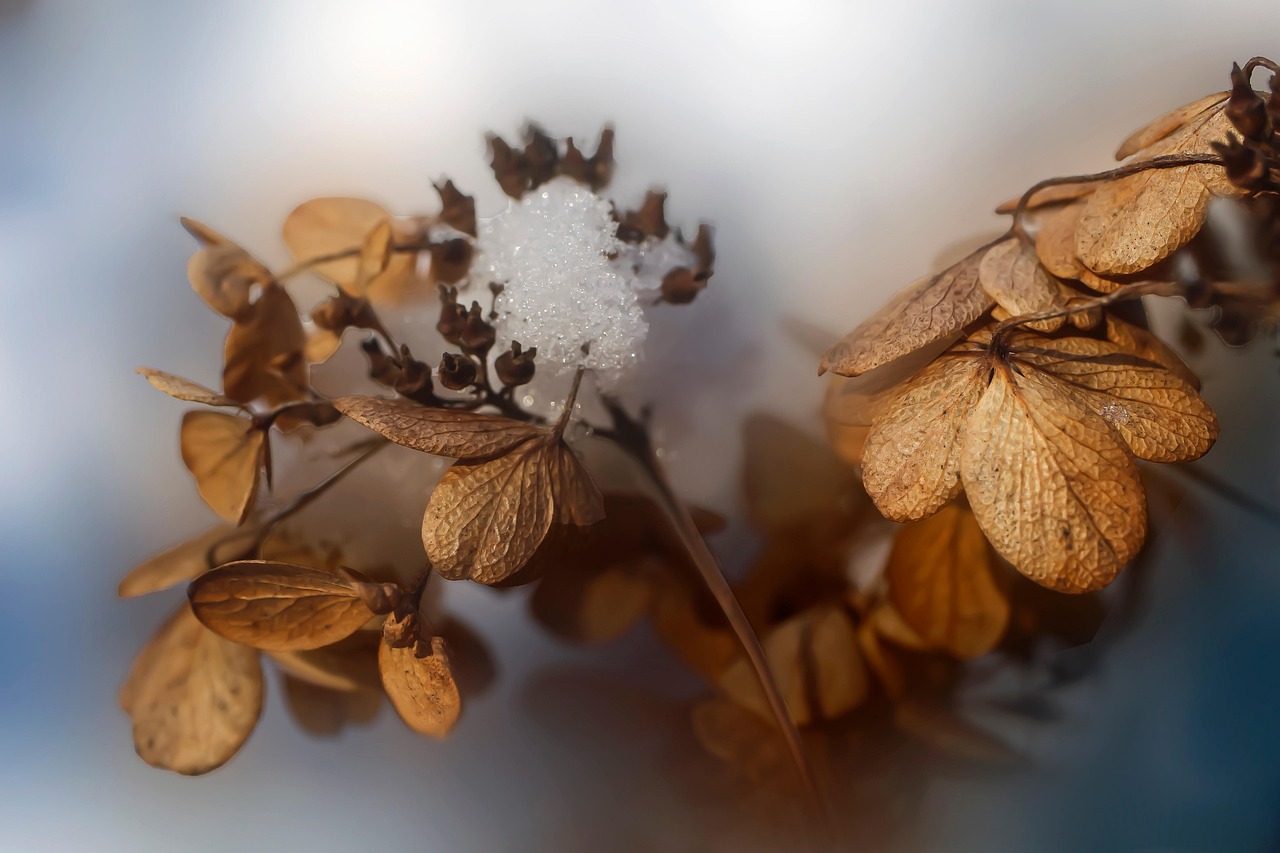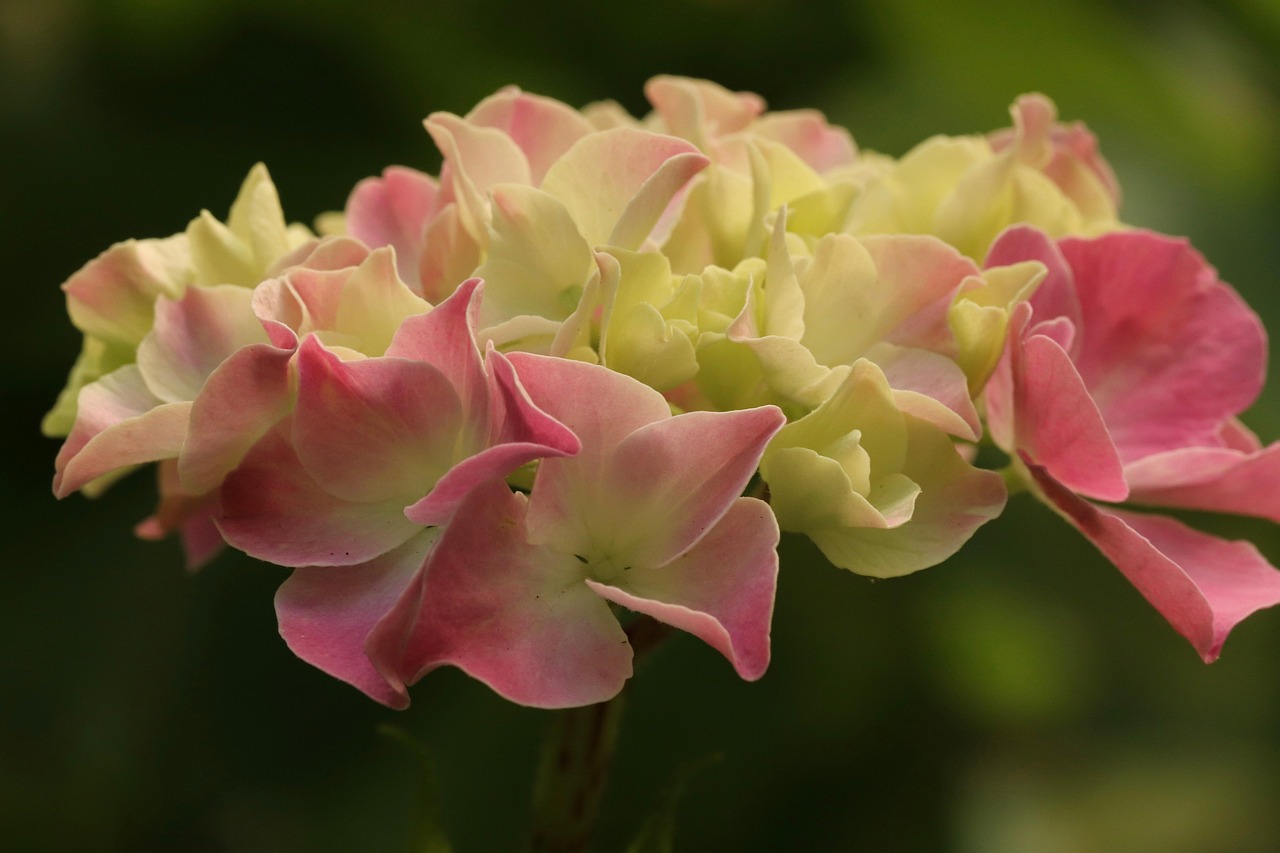Hydrangea plants are diverse and can be classified into several varieties, each with unique characteristics. The most popular types include Hydrangea macrophylla, Hydrangea paniculata, Hydrangea arborescens, and Hydrangea quercifolia. Each type offers different flower shapes, colors, and growth habits, making them a favorite among gardeners.
Hydrangeas are a staple in many gardens, celebrated for their stunning blooms and lush foliage. These flowering shrubs can transform any landscape, providing vibrant colors throughout the growing season. They thrive in various climates and soil types, which contributes to their widespread popularity. Understanding the different types of hydrangeas is essential for selecting the right variety for your garden.
The diversity among hydrangea species is remarkable. They can range from small, compact plants suitable for borders to large shrubs that can serve as focal points in landscapes. Additionally, their flowers can vary significantly in color, shape, and size. This article will explore the primary types of hydrangea plants, highlighting their unique attributes and ideal growing conditions.
Common Types of Hydrangea Plants

When it comes to hydrangeas, there are four main types that gardeners often consider:
| Type | Characteristics | Optimal Conditions |
|---|---|---|
| Hydrangea macrophylla | Large, round flower clusters; can be blue or pink depending on soil pH. | Prefers partial shade and well-drained, moist soil. |
| Hydrangea paniculata | Cone-shaped flower clusters; often white that turn pink with age. | Thrives in full sun to partial shade and tolerates various soil types. |
| Hydrangea arborescens | Round flower heads; typically white or cream. | Best in partial shade with moist, well-drained soil. |
| Hydrangea quercifolia | Oak-like leaves; flowers are white and turn pink. | Enjoys full sun to partial shade and well-drained soil. |
Each of these hydrangea types has its own unique growth habits and care requirements. For example, Hydrangea macrophylla is known for its breathtaking blooms that change color based on soil acidity. This adaptability allows gardeners to experiment with different soil amendments to achieve the desired hue.
On the other hand, Hydrangea paniculata is highly valued for its ability to thrive in full sun, making it an excellent choice for sunny garden spots. This variety is also more tolerant of pruning, allowing for easier maintenance and shaping in the landscape.
Understanding these differences is key to successfully growing hydrangeas. Choosing the right type for your garden’s conditions will ensure vibrant blooms and healthy plants. As we delve deeper into each type, you will discover specific varieties and their unique traits that make them stand out in garden settings.
Hydrangea macrophylla: The Bigleaf Hydrangea
Hydrangea macrophylla, commonly known as the bigleaf hydrangea, is one of the most popular varieties among gardeners. This type is characterized by its large, lush leaves and stunning round flower heads. The blooms can appear in various colors, including pink, blue, and white, depending on the soil’s pH level.
One of the fascinating aspects of Hydrangea macrophylla is its ability to change color. Gardeners can influence the color of the flowers by adjusting the soil’s acidity:
- Acidic Soil: Produces blue flowers.
- Neutral Soil: Yields purple flowers.
- Alkaline Soil: Results in pink flowers.
This adaptability makes it a favorite for many gardeners who enjoy experimenting with soil amendments. To successfully grow this variety, it is essential to provide it with the right conditions:
- Plant in partial shade to protect the blooms from harsh sunlight.
- Ensure the soil is rich in organic matter and well-drained.
- Water regularly to maintain consistent moisture.
Hydrangea paniculata: The Panicle Hydrangea
Hydrangea paniculata, or panicle hydrangea, is another popular variety known for its impressive, cone-shaped flower clusters. These flowers often start white and mature to shades of pink as they age. This variety is particularly appreciated for its hardiness and ability to thrive in a range of conditions.
Panicle hydrangeas are ideal for gardeners looking for low-maintenance options. They can adapt to full sun or partial shade and are tolerant of various soil types. Here are some notable features:
- Blooms appear later in the summer, providing color when other plants may be fading.
- The strong stems can support large flower heads without drooping.
- They respond well to pruning, allowing for shaping and size control.
For optimal growth, panicle hydrangeas should be planted in well-drained soil and given adequate water, especially during dry spells. Their robust nature makes them suitable for both formal gardens and natural landscapes.
Hydrangea arborescens: The Smooth Hydrangea
Hydrangea arborescens, known as smooth hydrangea, is recognized for its round flower clusters that typically appear in white or creamy shades. This variety is often associated with the popular ‘Annabelle’ cultivar, which can produce enormous blooms that can reach up to 12 inches in diameter.
This type of hydrangea is particularly appealing for those who prefer a more informal garden design. It tends to have a bushy growth habit and can provide substantial coverage. Key aspects include:
- Prefers partial shade, making it suitable for woodland gardens.
- Requires consistent moisture but can tolerate short periods of drought.
- Can be cut back each spring for renewed growth and larger blooms.
The smooth hydrangea is an excellent choice for beginners due to its hardy nature and low maintenance requirements. It thrives in a variety of conditions and can be used effectively in borders or as a foundation plant.
Hydrangea quercifolia: The Oakleaf Hydrangea

Hydrangea quercifolia, commonly referred to as oakleaf hydrangea, is distinguished by its unique oak-like leaves. This variety offers a different aesthetic compared to others due to its textured foliage and elongated flower clusters that transition from white to pink as they mature.
The oakleaf hydrangea is also valued for its autumn interest, as the leaves turn a vibrant red or burgundy in the fall. Important considerations for growing this variety include:

- Thrives in full sun to partial shade.
- Prefers well-drained, slightly acidic soil enriched with organic matter.
- Requires regular pruning to maintain shape and encourage blooming.
This type of hydrangea can be particularly striking when planted in groups. Its unique foliage and showy blooms make it a wonderful addition to any garden setting.
Unique Cultivars of Hydrangeas
In addition to the main types of hydrangeas, there are numerous cultivars that offer unique characteristics and adaptations. These cultivars can provide variations in flower color, size, and growth habits. Exploring these specific varieties can help gardeners choose the best options for their landscapes.
Hydrangea macrophylla Cultivars
Within the bigleaf hydrangea category, several popular cultivars stand out:
- ‘Endless Summer’: This cultivar is famous for its ability to bloom on both old and new wood, producing flowers throughout the summer. Its blue or pink flowers change color based on soil pH.
- ‘Penny Mac’: Known for its large, mophead flowers, this variety is perfect for gardeners seeking a classic look. It thrives in partial shade and has excellent cold hardiness.
- ‘Nikko Blue’: A favorite for its vibrant blue flowers, this cultivar thrives in acidic soils. It produces big, rounded flower clusters and is best planted in areas with some afternoon shade.
Hydrangea paniculata Cultivars
The panicle hydrangea also boasts notable cultivars that enhance its appeal:
- ‘Limelight’: This cultivar features large, lime-green flower clusters that turn pink as they mature. It can grow quite tall, making it suitable for backgrounds in garden beds.
- ‘Little Lime’: A compact version of ‘Limelight’, this cultivar offers similar color changes but stays smaller, making it ideal for smaller gardens or containers.
- ‘Vanilla Strawberry’: This unique cultivar produces creamy white flowers that gradually turn pink and then a rich strawberry red. It adds dramatic color to late summer gardens.
Hydrangea arborescens Cultivars
Among the smooth hydrangeas, several noteworthy cultivars include:
- ‘Annabelle’: Perhaps the most famous of the smooth hydrangeas, ‘Annabelle’ produces enormous white flower heads that can reach up to a foot in diameter. It is known for its strong stems that support heavy blooms.
- ‘Incrediball’: This cultivar is a more resilient version of ‘Annabelle’, known for its sturdy stems and large white flowers. It maintains its shape well even after heavy rain.
- ‘Invincibelle Spirit’: This cultivar offers pink blooms that change to a deeper hue as they age. It was developed to be more robust and adaptable to various growing conditions.
Hydrangea quercifolia Cultivars
The oakleaf hydrangea also has some standout cultivars worth considering:
- ‘Snow Queen’: This cultivar features large white flower clusters that can last from summer into fall. Its leaves turn a brilliant red in autumn, providing year-round interest.
- ‘Alice’: Known for its large flower clusters, ‘Alice’ can produce blooms that measure up to 12 inches long. It is an excellent choice for adding height and drama to garden beds.
- ‘Ruby Slippers’: A compact variety with striking red foliage in the fall. Its unique flowers start white and transition to pink, making it a colorful choice for smaller gardens.
Caring for Hydrangea Varieties

Caring for hydrangeas involves understanding their specific needs based on their type and cultivar. Here are some essential care tips:
- Watering: Hydrangeas generally prefer moist soil. Regular watering is crucial, especially during dry spells.
- Pruning: Pruning requirements vary by type. For example, bigleaf hydrangeas should be pruned after flowering, while panicle hydrangeas can be pruned in late winter or early spring.
- Fertilization: Use a balanced fertilizer in early spring to promote healthy growth and blooming.
- Pest Management: Monitor for pests such as aphids and spider mites. Using insecticidal soap can help manage these issues without harming the plants.
By understanding the unique characteristics of different cultivars and adhering to their care requirements, gardeners can enjoy beautiful hydrangea displays throughout the growing season.
Additional Tips for Successful Hydrangea Gardening
In addition to the fundamental care tips discussed earlier, there are several other considerations that can enhance the health and aesthetics of hydrangeas in your garden. Understanding these factors can contribute to a successful gardening experience.
Soil Considerations
The type of soil plays a crucial role in the growth of hydrangeas. Here are some important points to keep in mind:
- Soil pH: As previously mentioned, the pH level of the soil directly affects the flower color of certain hydrangea types, especially Hydrangea macrophylla. Testing your soil’s pH and making necessary amendments can lead to beautiful blooms.
- Organic Matter: Incorporating organic matter such as compost or well-rotted manure can improve soil structure, drainage, and nutrient content.
- Mulching: Applying a layer of mulch around the base of the plants helps retain moisture, suppress weeds, and regulate soil temperature.
Light Requirements
Different types of hydrangeas have varying light requirements. Understanding these needs is essential for optimal growth:
- Full Sun: Varieties like Hydrangea paniculata thrive in full sun, which promotes robust flowering.
- Partial Shade: Most bigleaf and smooth hydrangeas perform best with some protection from harsh afternoon sun. Too much direct sunlight can scorch the leaves and reduce blooming.
- Morning Sun: Some gardeners find that providing morning sun with afternoon shade yields the best results for certain varieties.
Winter Protection
In colder climates, winter protection is vital for hydrangeas to survive freezing temperatures. Here are some strategies:
- Mulching: A thick layer of mulch around the base of the plant can provide insulation against cold temperatures.
- Wrapping: For particularly vulnerable types, such as bigleaf hydrangeas, wrapping the plant with burlap can help protect it from harsh winter winds.
- Location: Planting hydrangeas in sheltered areas can provide additional protection from extreme weather conditions.
Final Thoughts
Hydrangeas offer an incredible variety of colors, forms, and growth habits that can enhance any garden landscape. From the classic appeal of bigleaf hydrangeas to the unique characteristics of oakleaf hydrangeas, each type brings its own charm and beauty. Understanding the specific care requirements and environmental preferences of different hydrangea varieties allows gardeners to create stunning displays throughout the growing season.
The adaptability of hydrangeas, including their capacity to thrive in various soil conditions and their ability to change flower colors based on pH levels, makes them an exciting choice for both novice and experienced gardeners alike. By selecting the right varieties and providing proper care, anyone can enjoy the vibrant blooms and lush foliage that hydrangeas are known for.
As you embark on your hydrangea gardening journey, remember to experiment with different types and cultivars. Observe how they respond to your local climate and soil conditions. With patience and attention, you will cultivate a beautiful hydrangea collection that will bloom year after year, bringing joy and color to your garden space.
